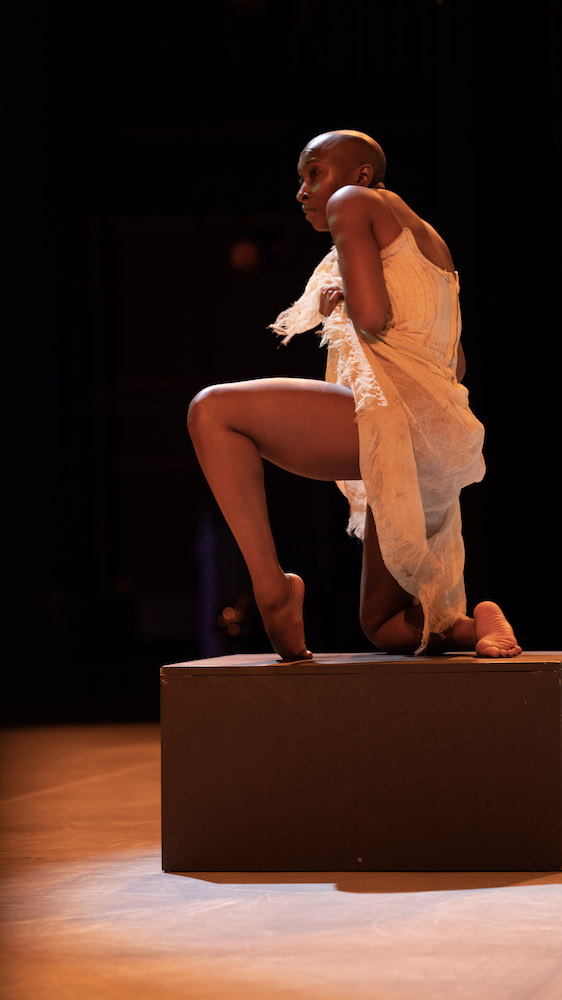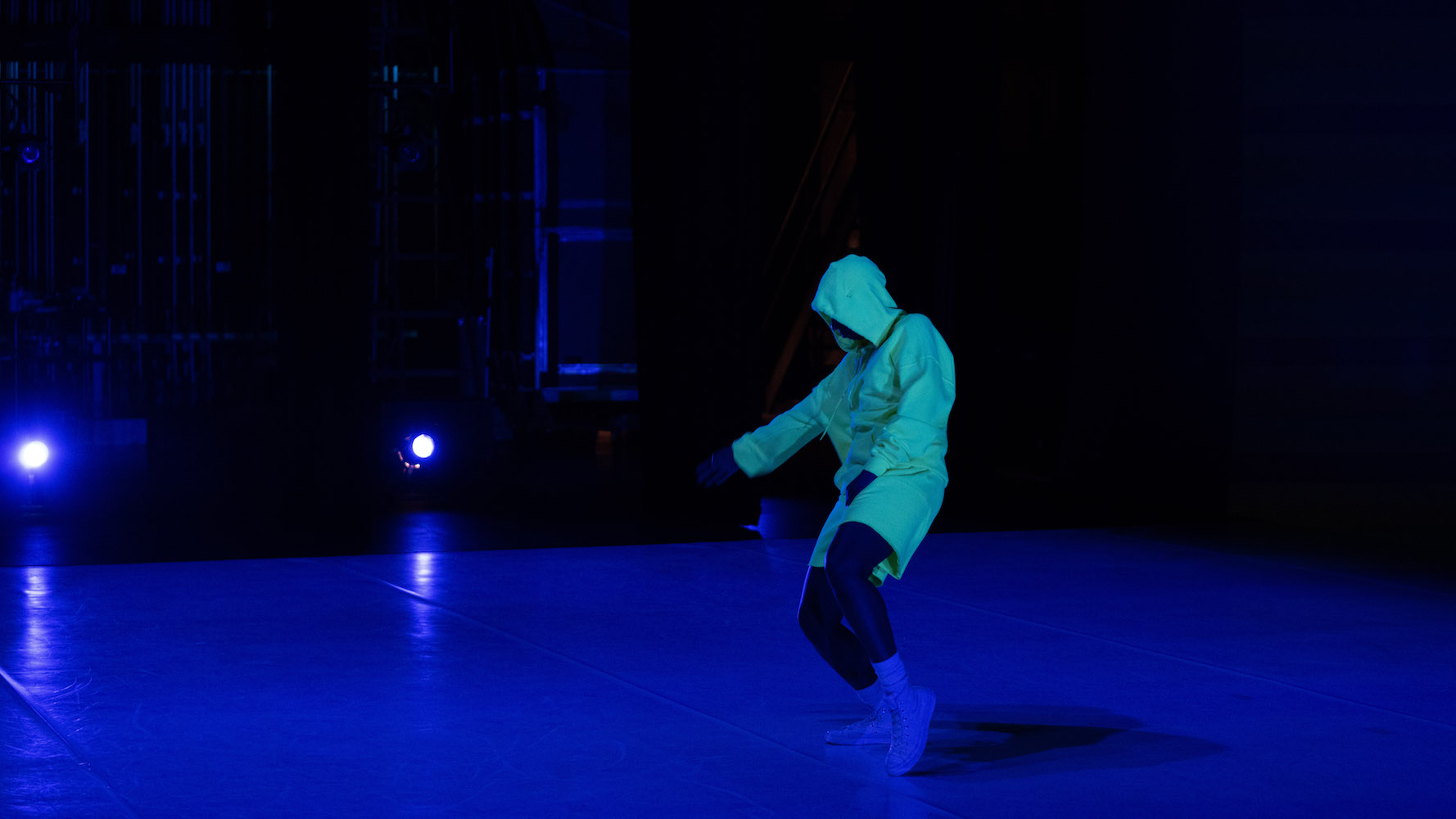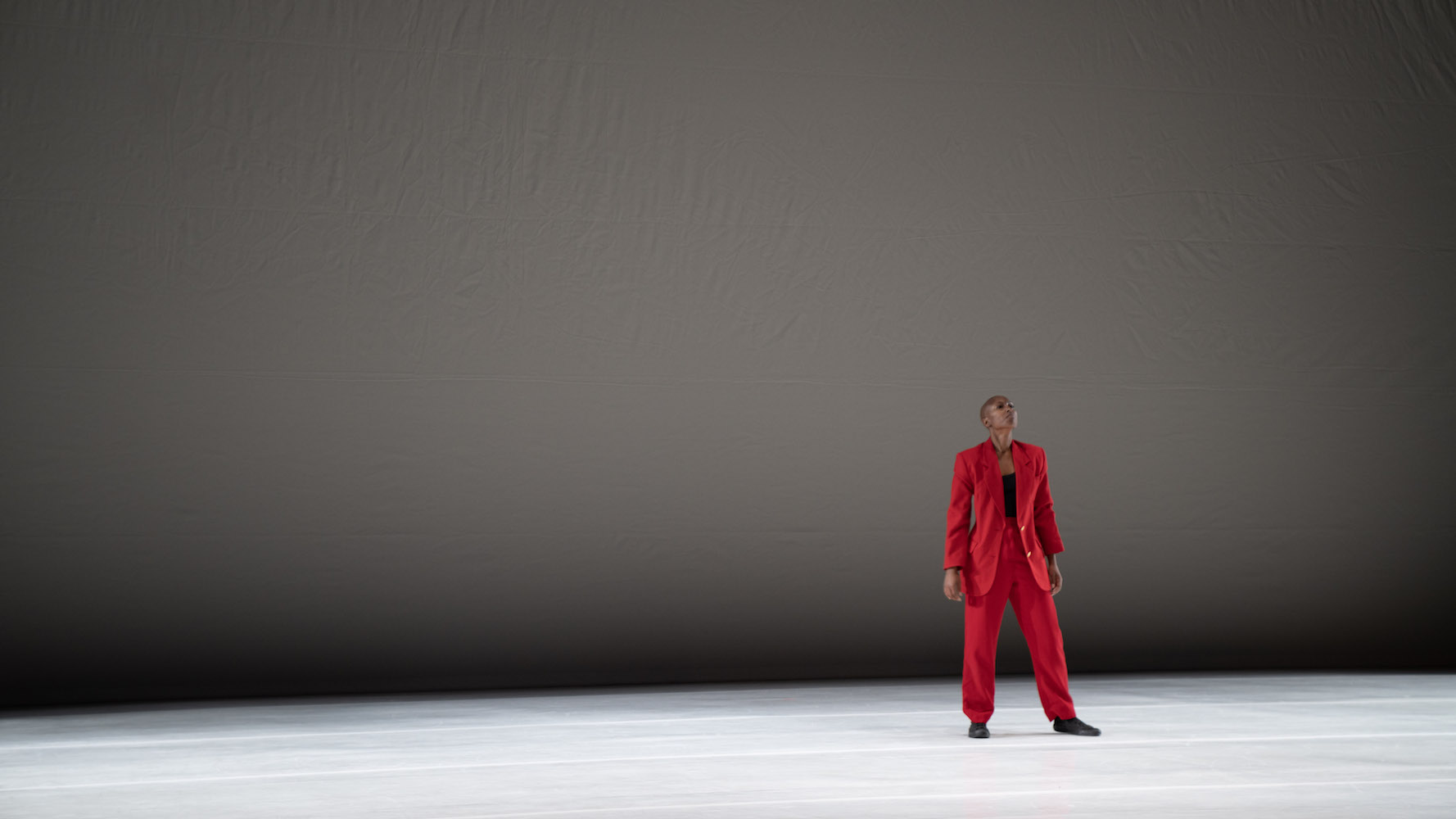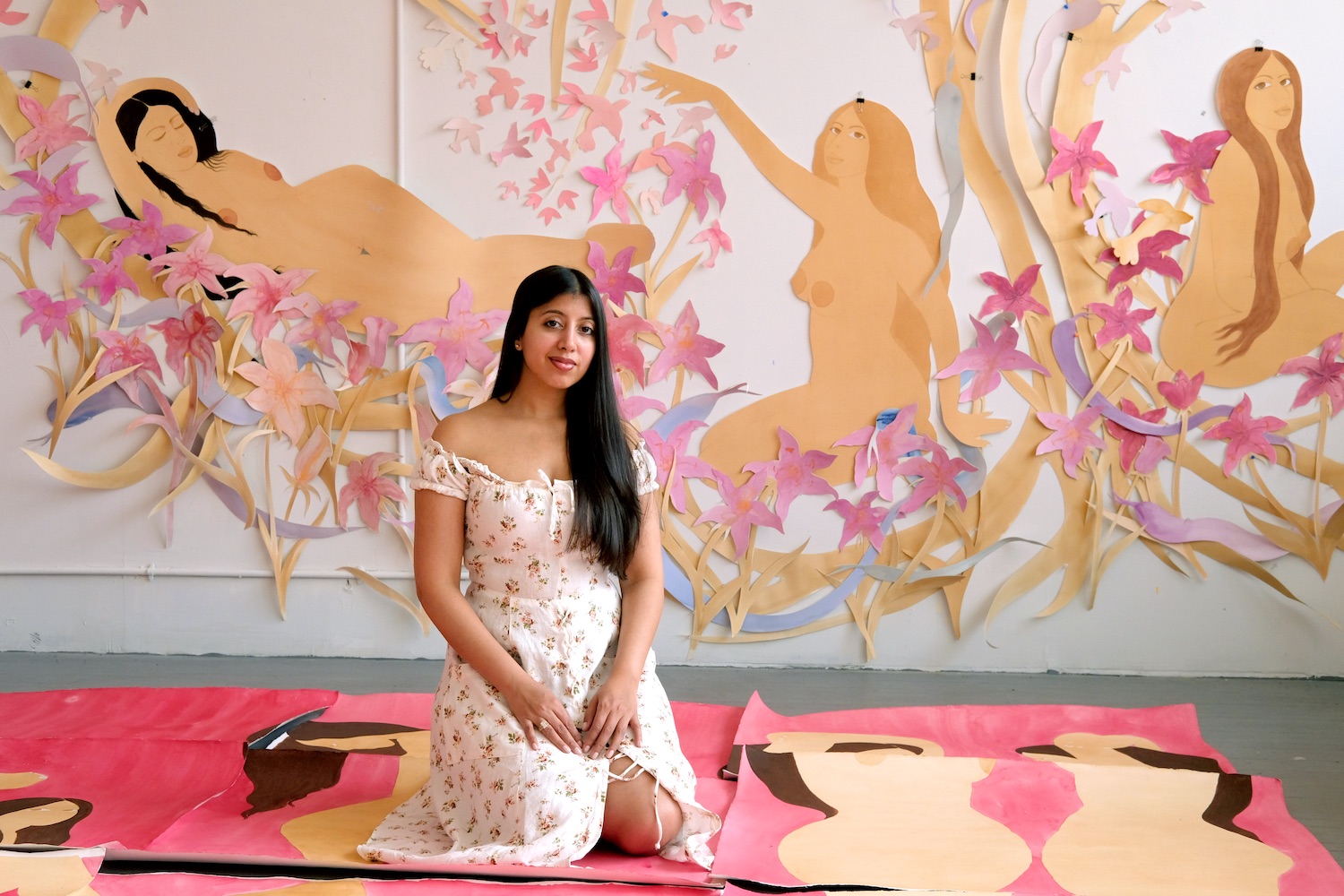Jade Solomon Curtis, an activist, choreographer, and dance artist, embraces community organization and the power of dance as tools in healing. She is the founder of Solo Magic, a non-profit arts initiative with collaboration at its center to create socially relevant pieces. She is also the founder and curator of the Radical Black Femme Project (RBFP), a global residency program that uplifts artists whose work exists in the realm of resisting racism and transphobia. RBFP, like most everything Curtis does, seeks justice and equity, with an emphasis on counter-cultural movements and conversations.
Curtis speaks with Whitewall about her activism, using dance to explore trauma, and what she’s learned about intuition as she’s performed and shared her work through the pandemic. While Curtis’ work involves itself in social justice, her true mission is allowing artists to exist in their most honest selves, free of oppressive expectations and systems.

Jade Solomon Curtis in Emancipation, Photo by Arif Gursel
WHITEWALL: What inspired you to first establish the Radical Black Femme Project?
JADE SOLOMON CURTIS: Radical Black Femme Project (RBFP) was birthed out of a desire for a space and community where Black Femme creatives of all genders and mediums could contemplate, reimagine and simply be without institutionalized frameworks dictating and determining our value. RBFP was established as an active digital sanctuary to support, heal and reconnect the disconnection between the diaspora and its children spread out amongst the globe.
WW: When did you begin to see dance as a tool in activism?
JSC: Dance became an apparent tool in activism from the moment that I began to dance. Being a Black dancer and a woman automatically put me into a hypervisible / hyper-invisible group. In the same breath, I was seen and unseen, heard and unheard. Every gesture that I made, eye that I crossed, or word that I spoke became my superpower in aiding in the dismantling of oppressive systemic approaches to my existence.
WW: Dance is a genius way of embodying different social issues and using it as an outlet in processing those issues. When choreographing different pieces, what’s the starting point for you?
JSC: My works, deeply personal and connected to the other, begin with an emotional reaction to a trauma I have experienced and/or witnessed. My works are an attempt to understand, dissect, transform or purge the toxicity that accompanies that trauma.
WW: The most recent RBFP residency ended in August with a cohort of artists from all different backgrounds. Were there particular issues you hoped to highlight with this cohort?
JSC: It was not a goal of mine to highlight a particular issue, but to share and connect the voices and bodies holding the issues. I wanted to eliminate the pressures of producing “life-altering” works and simply allow the artists to BE in their unique process, exploring unfamiliar processes and dismantling processes that were not serving them. A few of the themes that came through in the RBFP residencies included identity, healing, dis-respectability, obscuring boundaries, digital rituals, historical and ancestral connections, and multidimensionality.
WW: I watched a clip of “Keeper of Sadness,” performed by Tilly on your Instagram. It really highlighted how different forms of aggression are internalized and even passed down intergenerationally. How has community impacted you in the realm of dance?
JSC: In the realm of dance, movement is a storage system cradling those who have yet to find their voice, those who were killed before they could use their voice and those who were told they did not have a voice. My body holds the science, my mind the memories, and my spirit the energy of the community. It is community that compels me to sift through these storage systems and seek out the best ways to purge genetically recycled traumas and pains that no longer serve us.
WW: You recently performed in the Provincetown Dance Festival that got to go on in-person. Has the pandemic influenced or changed the way you feel about performing? If so, how?
JSC: My indoctrination into the art form of dance tells me that to perform is sacred. That it is an offering only few of us are able to embody. However, while in the pandemic in anticipation for what would come next, I have come to realize that it takes more effort and commitment to be both the transmitter and receiver in a virtual/digital setting. And although different and somewhat difficult to tap into, energies exchanged between individuals and groups can be accessed in similar if not the same way as when in person. It is about submitting to the circumstances and allowing intuition to be your guide. It is about allowing the stage and the performance to take place as the work calls for it. The pandemic has served as a reminder for me to listen and follow. Most importantly, the pandemic has taught me that dance for activism is urgently needed.

Jade Solomon Curtis in Colored On the Wall, Photo by Arif Gursel









